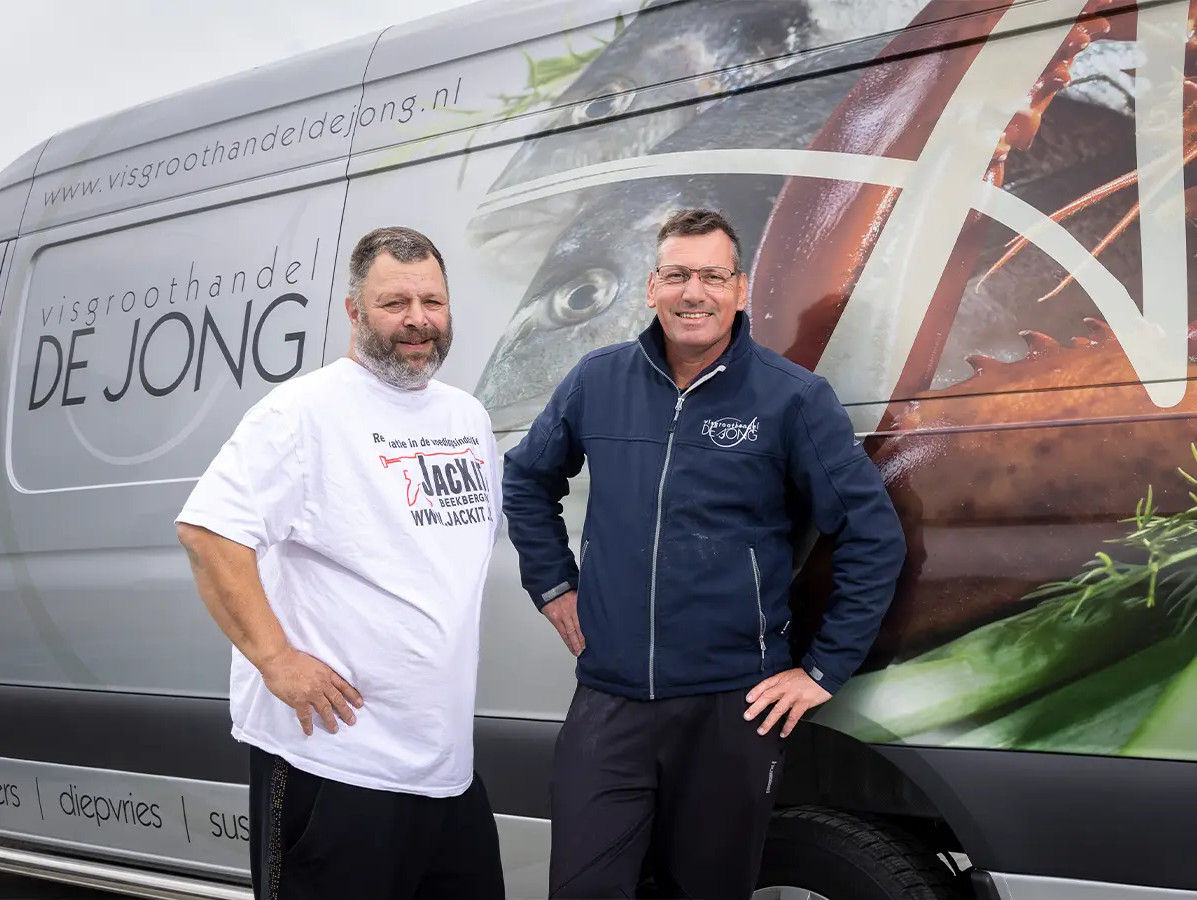
Koos de Jong, owner of Visgroothandel De Jong, found himself at a crossroads: invest in a brand-new facility or renovate the existing main site? For now, he chose the latter. With freshly installed walls, sealed with innovative sealant from JacKit, he’s ready for the years ahead.
It all started twenty years ago with a single crate of filleted North Sea cod. That was the beginning of Visgroothandel De Jong on Urk. Founder and owner Koos de Jong had already spent fifteen years working for someone else. “Also in the fish trade, so I knew the industry inside out. But running your own business is a whole different ballgame,” he says. Entrepreneurship turned out to be a great fit: that one crate of cod has grown into a thriving seafood company with annual revenues of 50 million euros. The company supplies both foodservice wholesalers and restaurants directly. These days, the fish hardly ever comes from the North Sea. “The Philippines, the Maldives, China, Norway, Ireland,” Koos explains. He aims to visit his suppliers at least once a year. Norway, in particular, home to the salmon that makes up 60% of his trade, is a favorite. “If it were just up to me, I’d live there. Surrounded by fjords and salmon farms. But my children and grandchild keep me here.”
Koos hardly fillets fish himself anymore: he now employs 60 people. Activities are spread across several locations, all within a few hundred meters. We meet him in a mobile unit behind the main building, a spacious facility he had built eighteen years ago. “This is where we handle order picking and some light processing: descaling, gutting, portioning. Then we have a few external sites: one for large-scale production, one for incoming pallets of fish, one for storing dry goods, and a spot where we keep live crab and lobster.” Ideally, Koos would prefer everything under one roof, but there simply isn’t space for that on Urk right now. “And building from scratch would cost several million. I’d rather leave a decision like that to whoever takes over from me. No, I haven’t figured out who that will be yet. Thankfully, there’s still time, I’m only 52.”

Jack Pluim and Koos de Jong
Instead of a full rebuild, the main location has been given a significant upgrade. All rooms are being fitted with new walls, with ceilings to follow later. “That’s my advice,” says Jack Pluim from renovation company JacKit with a smile. “Initially, Koos just wanted to touch up some rust spots. But that would’ve meant years of patchwork. So I recommended doing it properly in one go, fully in line with current regulations.” For the walls and bump rails, Jack and his team used antibacterial and 100% recyclable Sealwise WCB. “It’s highly suitable for the food industry and the specific challenges it brings. It’s also used in meat processing. And it’s certified with fire rating class 1, which is becoming more and more important for insurers,” Jack explains. The walls were sealed using Bond & Seal, a new and innovative sealant developed by Jack himself. “It carries the FDA certification, meets top food safety standards, and is highly water-resistant and mold-repellent. It also cures quickly.” That last point mattered for this job, says Koos: “We tackled it step by step, room by room. We were able to shift operations as needed, but ultimately we wanted to get back to our usual space as soon as possible. And the pressure washer needed to work again right away. Luckily, the JacKit team was very flexible; it was all easy to arrange.”
Koos is also impressed with the workmanship. “They’re good at adapting, if the floor’s not quite level or they hit an unexpected socket, they know exactly what to do.” That eye for quality goes both ways, Jack notes. “Koos keeps a close eye on everything. Sure, things run fine here even if he’s away for a week. But his standards are sky-high.” Koos nods; he recognizes that trait in himself. In addition to salmon, crab, and lobster, he imports, processes and sells mackerel, tilapia, sea bass, and dorado, among others. “Eighty percent is farmed; that figure has increased dramatically in the past ten years. Pressure on seafish is only growing.” What other shifts has he noticed in the industry? “Orders are increasingly concentrated towards the end of the week. Apparently, restaurants see fewer guests during the week than they used to. Still, we can’t complain, business is going very well.”
www.visgroothandeldejong.nl
www.jackit.nl
Photos: ©Koos Groenewold
Source: Vakblad Voedingsindustrie 2025